 |
 |
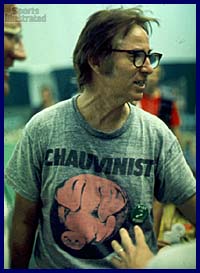 |
The « Macho » « The chauvinist pig » (USA 1918-1995) |

Riggs fait la une du time en 1973... |
Strange nicknames for a former Wimbledon champion, but it has to be said that these two descriptions have nothing to do with his tennis career, which has now been somewhat forgotten. In the history of tennis Bobby Riggs will remain the man who took part in the “battle of the sexes” in 1973 by challenging Margaret Court, then Billie Jean King. Riggs was described as a “chauvinist” by the press at the time, when he was 55 and maintained that he could beat the best young players in the world, while making extreme and provocative comments on the superiority of men over women. He described himself as a “chauvinist pig” and even said that he wanted to be the number one pig! |
| Born
in Los Angeles in 1918, Robert Larimore Riggs had his first tennis lessons
at the age of 12. People started to talk about him in 1934 when at the
age of 16 he beat Adonis Schield, a former Wimbledon and Forest Hills finalist.
In 1937, at the age of 19, he was the American No. 4 and took a set from
Von
Cramm at the US Open. The following year, he played in the Davis Cup
Final alongside Donald Budge and took
the deciding point by beating the Australian Adrian
Quist in a long and difficult match in which he showed character.
In 1939, after Budge had gone professional, he became World No. 1 during a fluctuating year. He got to three finals of the Grand Slam tournaments that he took part in: finalist in Paris, champion at Wimbledon and Forest Hills. However, he did not manage to retain the Davis Cup and lost a decisive match against Quist, who got his revenge for the previous year. |

Riggs (left) in 1940 |
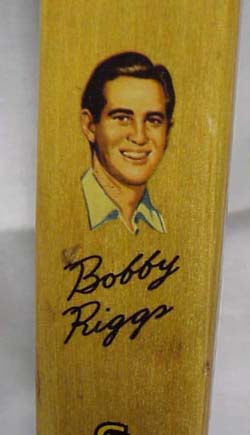
Wooden Racket with Riggs signature, 1946 |
Small, agile and with impressive ball control, he played his matches with a level of motivation that did not always seem to match the event. More than any other player at the time, Riggs sought to profit from his amateur tennis at a time when it was strictly forbidden. In order to give himself some motivation, Riggs did not miss an opportunity to bet on his own matches, before and even during them, sometimes even during a game, depending on his odds, which went up and down according to the score. It is said that he won a small fortune at Wimbledon betting on his hat trick. Riggs was in a very good mood at the time and said that it was important to him to make the game a little profitable; At the Davis Cup in Philadelphia, far from the London bookmakers, he must have lost some of his motivation, which perhaps explains his defeat against Quist… |
| With this type of character, Riggs turned naturally towards professionalism and after winning a second title at Forest Hills in 1941, he played his first tournament the following year. He took the professional world champion titles in 1946, 47 and 49 and two doubles titles with Donald Budge in 42 and 47. From 1950, outclassed by younger players such as Jack Kramer and Pancho Gonzales, he became the promoter and organiser of the pro tour, which he quickly had to give up when Jack Kramer himself decided to take charge of the organisation of professional tennis. |
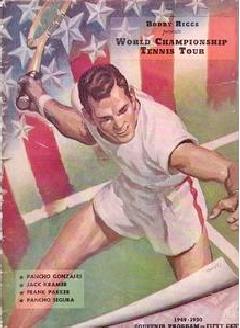
"Bobby Riggs tour" poster 1949-1950 |
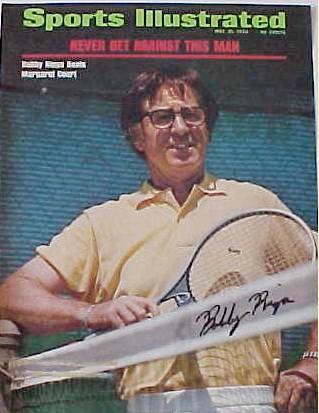
"Never bet against this man"! title of Sport Illustrated after his victory against Margaret Court. |
Riggs then disappeared from the small world of tennis for about twenty years and in 1973 he managed to make a surprising and spectacular comeback. It was right in the middle of the women’s liberation movement, and the battle for the right to abortion and sexual equality was at its height. With his innate sense of spectacle and provocation, Riggs launched a challenge to the world champion, Margaret Court. Deliberately playing the role of the unpleasant and caricatured chauvinist, systematically disparaging the role of women and calling himself a chauvinist pig, he played against Margaret Court in May in Ramona, California. The “chauvinist” won easily in two sets 6/2 6/1. |
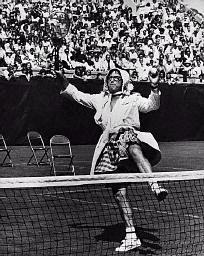 |
|
|
|
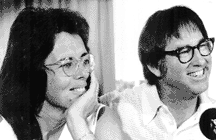
Press conference King et Riggs. |
Riggs did not stop there. “I want Billie Jean King, I want the women’s lib leader” he said as he left the court. That time the challenge became a national affair. Billie Jean King was at the forefront of the battle for sexual equality in tennis; she was behind the first female professional tournaments and campaigned for equal prize money. She was also the first high-level sportswoman to publicly admit to being homosexual. |
| Billie Jean King, aged 29, was at the peak of her career. In her position as a feminist campaigner, she did not hesitate to take up the challenge. The "battle of the sexes" was therefore organised with the support of the media and the whole thing became a big American-style show with huge amount of prize money. Riggs claimed to be a men’s liberation campaigner, openly displaying his contempt for the feminist cause. Rosie Casals, King’s doubles partner, responded by calling Riggs "an old man who walks like a duck, can't see, can't hear and besides, he's an idiot!" |
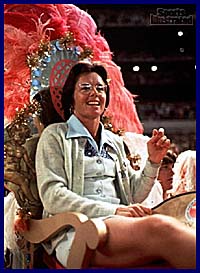 |
 |
 |
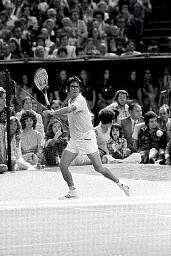 |
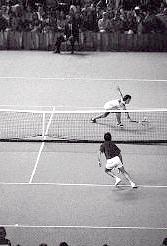 |
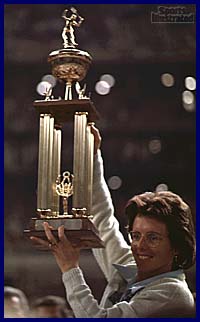 |
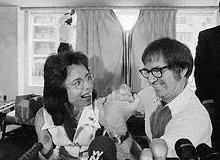
King and Riggs arm wrestle in front of the press |
After
the abuse, it all finally end in a constructive atmosphere in which mutual
respect prevailed. "For a male chauvinist, he did a lot of good for us
" said Rosie Casals finally. "We'll always remember him in the best possible
way. I always said he did the most for women's tennis."
Later, in 1993, King said. "At the time, the feminist movement was at its height. The battle of the sexes helped a lot of people realize that everyone can have skills whether you are a man or woman!". Needless to say, King and Riggs then remained the best of friends. |
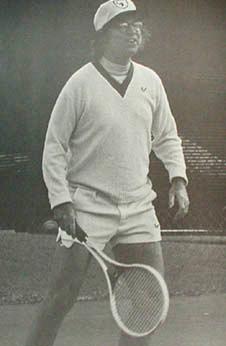
One of his last appearances on court |
In
1985, Riggs again got people talking about him and tried to put on a similar
show, but with less success. Partnered with Vitas Gerulaitis, they lost
a doubles match against Martina Navratilova and Pam Shriver. Riggs
was 67 at the time.
Suffering from prostate cancer, in 1988 he decided to found the "Bobby Riggs Tennis Museum Foundation" for medical research into prostate cancer. The museum recounts his career and more generally the history of tennis. The museum was inaugurated in 1996, one year after his death.
|
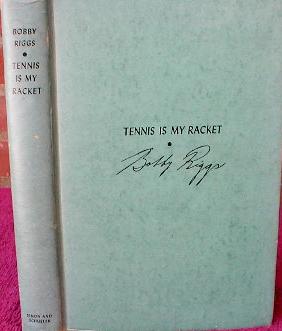
His first autobiography published around 1950 |
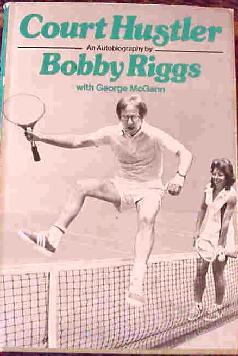
...and a second one after the battle of sexes. |
Here are his grand slam
titles : 2 singles, 1 men double, 1 mixed double.
During the war, Riggs won
two more American champion titles, at a time when the championship still
had very limited international participation, if any: a mixed doubles title
in 1940 with Alice Marble, and the men’s singles in 1941.
| Wimbledon | Men single | 1939 |
| Men Double | 1939 E.T.Cooke | |
| Mixed Double | 1939 Alice Marble | |
| Forest Hills | Men single | 1939 |
| Coupe Davis (1) | 1938 |
Des idées, des remarques, des suggestions? E-mail
E-mail
Dernière mise à jour : 30
avril 2010
Copyright BLANCHE NET communications.
Avril 2010.
.